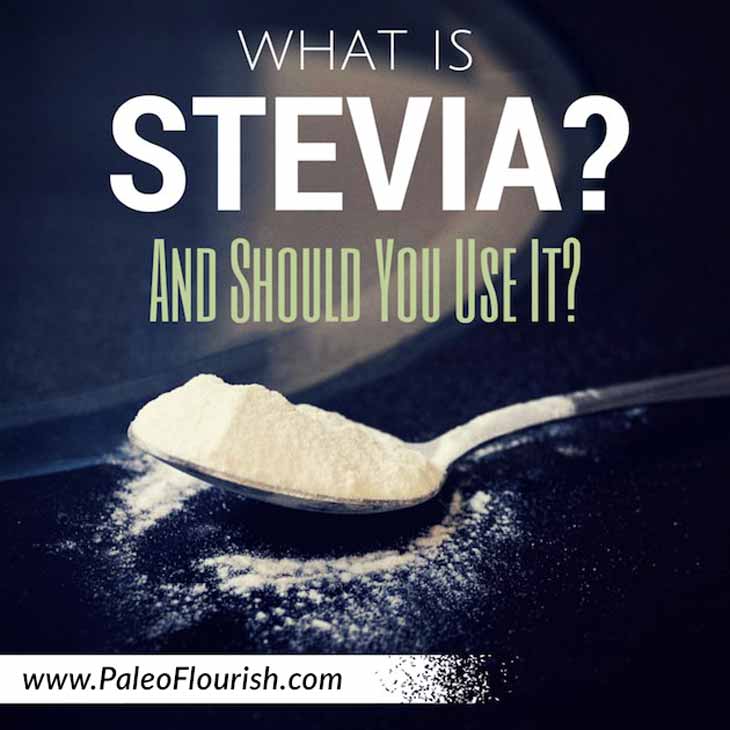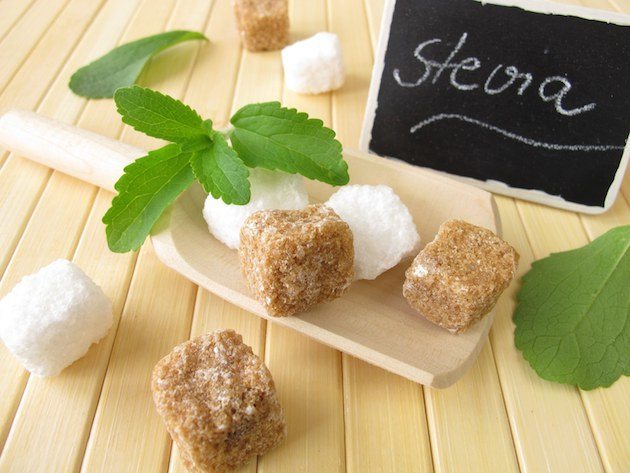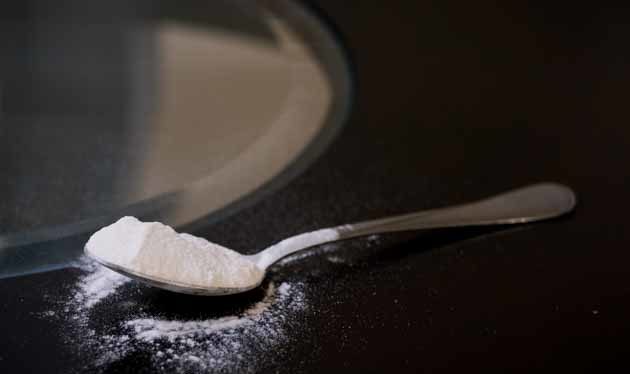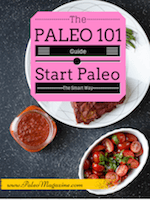What Is Stevia And Should You Eat It?

What is Stevia?
Stevia is a leafy green shrub-like plant (it’s part of the Asteraceae family and is related to the daisy and ragweed).
There are many different species of stevia (one species is called “candyleaf” and is native to New Mexico, Arizona and Texas). Another species is called Stevia rebaudiana Bertoni (sometimes you’ll see it called Rebiana or Reb A), which is native to Paraguay and Brazil, and that’s the species that typically used to sweeten food.
But, when people ask what is stevia, they’re typically referring to stevia extract that we buy in stores either as a solution or as a fine white powder. You can, however, grow your own stevia plant in certain parts of the world (generally places where it doesn’t get too cold).
History of Stevia
Stevia has been used in South American cultures (like the Guarani Indians) for over 1500 years. In South America it is often known as yerba dulce, and it is used for a variety of purposes including to sweeten local teas and as a medicine.
Stevia was rediscovered in 1899 by M.S. Bertoni who observed the Guarani Indians using it to sweeten bitter drinks. Hence why the name for that type of stevia bears the name Bertoni at the end.
In more recent times, stevia has been used widely as a non-caloric sweetener in countries like Japan and Brazil, and the first commercial stevia sweetener used in Japan was created Morita Kagaku Kogyo Co., Ltd. in 1971. Since then, usage of stevia has soared in Japan, and according to Stevia.com, in 1987, the Japanese used the equivalent of 700 metric tonnes of Stevia leaves.
However, it wasn’t until December 2008 that the US FDA allowed stevia to be labelled as a generally regarded as safe (GRAS) ingredient.
Just How Sweet Is Stevia?
Stevia leaves contain glycosides, which are super sweet compounds that are 100–300 times sweeter than table sugar (sucrose).
So, a tiny little bit can sweeten up your drink dramatically. That’s one of the reasons why many brands of stevia have bulked up stevia with other ingredients so that it feels more like adding regular sugar.

Even if you eat the leaves from the stevia plant, you’ll find they’re mildly sweet.
However, while some people find stevia to taste sweet, others can taste a really strong bitter aftertaste that make it very unappealing. The purity of the extracted stevia may have something to do with how bitter it tastes – the purer the extract, the less bitter the aftertaste – and also the type of glycosides extracted (rebaudioside versus stevioside) may have some effect. Lastly, there’s a personal element involved (some people just find it to taste bitter).
Personally, I like to mix stevia in with another sweetener like local raw honey to reduce the amount of honey used in a recipe, and I find the honey will take out any bitter stevia aftertaste that people can taste.
What are Glycosides, Steviosides, and Rebaudiosides?
Glycosides are the general chemical term for the compound in stevia leaves that make it sweet. There are several different types of glycosides in stevia, and the main ones are stevioside, Rebaudioside A, Rebaudioside C, and Dulcoside A. While stevia leaves contain steviosides the most, many people find that Rebaudioside A (which makes up only 3% of glycosides in stevia leaves) to taste better.
Hence why cheaper brands will often use steviosides while more expensive brands will use Reb A.
But, a better reason to avoid steviosides and buy Reb A stevia is that steviosides have been suggested to “potent contraceptive properties in female rats, implying that stevia may have an impact on estrogen, progesterone or both.” While this effect has not been investigated in humans, it is something to consider.
How is Stevia Extracted?
On an industrial scale, most stevia is extracted from the leaves by first drying the plant, then extracting the glycosides using alcohol or water. The alcohol or water is then removed leaving the white powder.
Is Stevia a Natural Sweetener?
This is always a loaded question as it depends on what your definition of ‘natural’ is. In general terms, you won’t find stevia extract naturally occurring in nature, but at the same time, what’s used to make stevia extract occurs pretty naturally as a plant growing outdoors. And the extraction process generally doesn’t involve huge amounts of processing.
Generally, most people would consider stevia a natural sweetener rather than an artificial sweetener like aspartame, Sucralose, or Saccharin.
Is Stevia Safe?
Generally, there aren’t any major health concerns with using stevia. Two 2010 journal reviews (one from the International Journal of Food Science and Nutrition and the other from the Cardiovascular & Hematological Agents in Medicinal Chemistry) both indicate that stevia is pretty safe. In fact, they indicate that stevia may be beneficial for certain health conditions like lowering blood pressure in hypertensive patients and lowering blood sugar levels in diabetics.
Is Stevia Paleo?
We generally don’t consider stevia Paleo for several reasons, including the potential for it to mess up your gut bacteria and the fact that it can inhibit your ability to curb sugar cravings.
So, if you’re looking for a sweet fix, then something like local raw honey is probably preferential to stevia. Even though local raw honey has calories, it also contains various nutrients that help your body break down the sugar and feeds your body so that it doesn’t need to crave more sugar.
What to Watch Out For When Purchasing
While we suggest cutting out stevia completely, we know that stevia can be great to ease off the sugar and get into Paleo and a healthier lifestyle.

So, if you do want to purchase stevia, please just Look Over The Ingredients List Carefully!
Many big brands of stevia are not pure stevia at all! They have all sorts of fillers in them to bulk up the amount and to make it taste, look, and used more like regular sugar.
Truvia is one example of a popular brand of stevia. The ingredients listed in Truvia are: erythritol, stevia leaf extract, natural flavors. I always wonder what natural flavors really are and plus erythritol, which is a type of sugar alcohol, is not considered Paleo at all.
Another popular brand of stevia is Pure Via, and their ingredients also include dextrose, cellulose powder, and natural flavors.
So, whatever brand you buy, be sure to look over the ingredients list and make sure they only have stevia extract in them.
Pure stevia brands I’ve seen for sale are this powder and this liquid extract (in water).
Images: Copyright © © Heike Rau from fotolia

